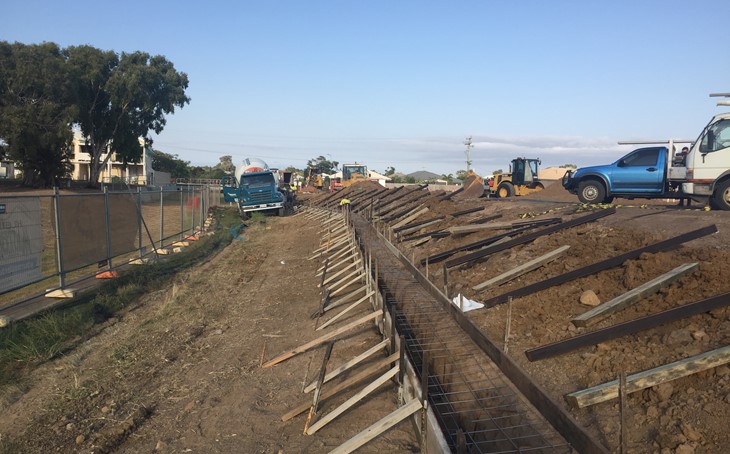
Retaining Walls
Courtesy of Queensland Building and Construction Commission
These days, large modern houses may be constructed close to subdivisional boulder retaining walls, due to the limited availability of sizeable blocks of land and backyard swimming pools being a common addition. This has led to an increase in the number, size and complexity of retaining walls being built.
What can you do to maintain retaining walls?
Once a retaining wall is in place, it is important to keep the area well-drained to prevent moisture sitting at the footings. It is also essential to reduce any vegetation next to the walls, because this may affect the moisture content of nearby soil. In addition, when it comes to masonry walls in particular, simple things like ensuring the subsoil drainage outlet is allowed to free flow and any weepholes are not blocked are key to ongoing maintenance.
What are the materials and height requirements for retaining walls?
Retaining walls are generally made of steel reinforced concrete or concrete blockwork, timber sleepers and boulders.
There are also certain practical maximum height requirements, depending on the type of material used to build the retaining wall.
- Timber sleepers – 1200mm (higher if larger vertical posts used)
- Boulders – 2500 to 3000mm
- Concrete blockwork – 2000mm for 200mm blockwork and 3000mm if 300mm blockwork is used
- Reinforced concrete retaining walls – no practical height limit.
What can go wrong with retaining walls?
Retaining walls usually fail by sliding or overturning as a unit, and common concerns include:
- inadequately constructed boulder walls used in subdivisional development
- inadequate provision for drainage behind retaining walls
- inadequate reinforcing and core filling of hollow concrete block walls; and
- use of inadequately durable timber in timber retaining walls.
Let’s talk about drainage
Keeping the retaining wall area well-drained is a must, as problems are more likely to occur if there is poor site drainage or broken stormwater or sewer pipes.
Water can cause significant issues for retaining walls, particularly those made of concrete. The build-up of the ground water table or saturation of the soil through heavy rainfall or broken drainage pipes can potentially exert twice the pressure on the wall that would have been present on the wall in dry times. This also means that unless the retaining wall has been specifically designed and built to withstand this type of pressure, it will fail.
In fact, inadequate drainage behind the retaining wall is probably the largest contributor to walls’ failing. If retaining walls have been inadequately constructed or built with inadequate drainage behind them, any failure of the retaining wall can have devastating effects on the pool or home.
Your builder should check with the relevant local government authority (LGA) that the subdivisional retaining wall has been approved and to obtain details of its construction, including the associated drainage system, prior to starting construction.
Builders and property owners must also ensure that whatever else they build on the site, including fences, sheds, swimming pools, stormwater drainage and so on, do not place any implied loads on the wall or affect its sub-surface drainage system.




